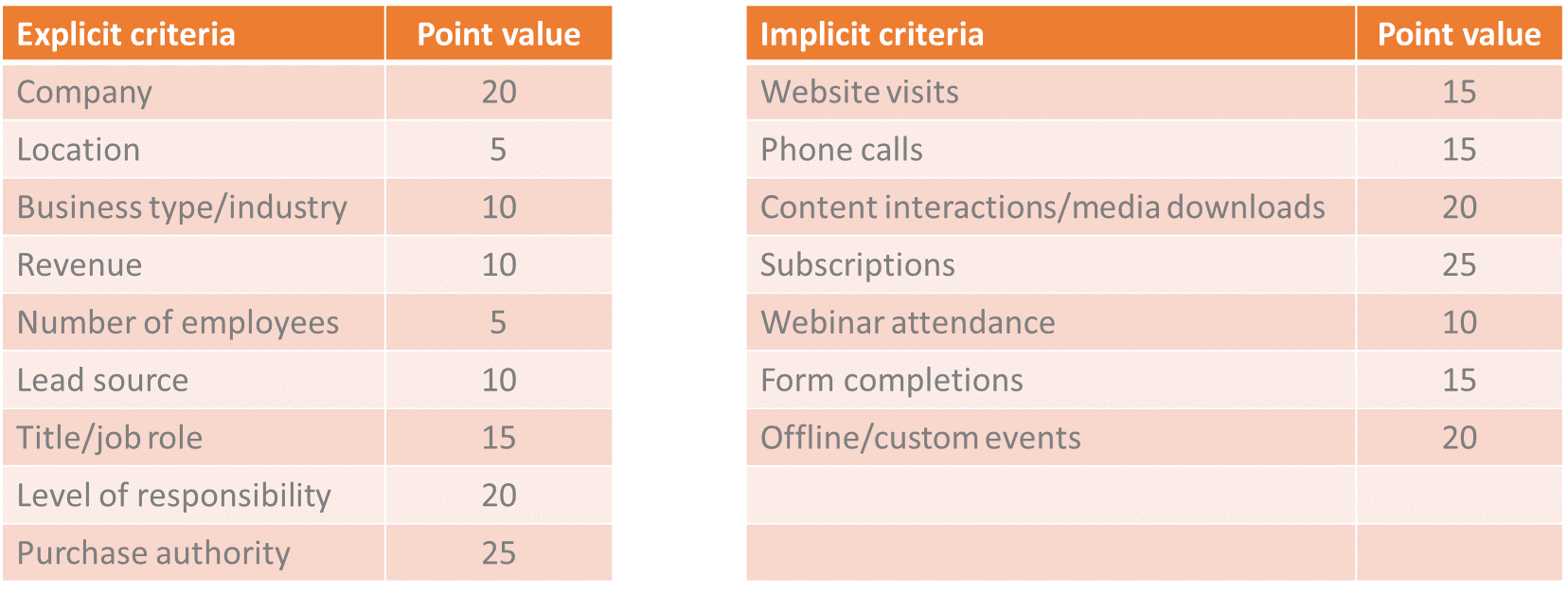Business-2-Business (B2B) Lead Scoring - A methodology for success
David JuddThere has long been a territory war between sales and marketing teams on what constitutes a qualified lead or opportunity, and as with most things in business nowadays we have ended up with acronyms! A Marketing Qualified lead is an MQL and a Sales Qualified Lead is an SQL, simple stuff obviously, but the devil lies in the detail and in this case the underlying definitions.

The following paper will provide a framework and methodology for marketers to score any new prospects or leads and define the processes and content types required to nurture them to a point where they can be handed off to the Sales team to close the opportunity.
How do you score a lead?
All prospects and leads can be defined by how much you know about them and how interested they are in your brand, this is called their Profile and Engagement.

Both the Profile and Engagement can be quantified by specific criteria, which you can agree between your Sales and Marketing teams.
The prospect Profile is explicit criteria – information that’s provided intentionally by the person (e.g., via a registration form or survey) and taken at face value, rather than analysed or interpreted for further meaning.
The following are examples of explicit criteria you should consider:
- Company
- Location
- Business type/industry
- Revenue
- Number of employees
- Lead source
- Title/job role
- Level of responsibility
- Purchase authority
The prospect Engagement criteria are implicit – information that’s NOT provided intentionally and; thus, can only be derived from analysis of their actions.
The following are examples of implicit data you should consider:
- Website visits – Number and type/category of pages visited, frequency/length of visits, referral sites
- Phone calls – If your automation platform is integrated with your CRM system, custom fields can be created to categorise different types of phone calls and assign points to them
- Content interactions/media downloads – Views and/or downloads of articles, press releases, white papers, videos, podcasts, infographics, etc.
- Subscriptions – Requests for newsletters, RSS feeds, other digital notifications for ongoing content
- Webinar attendance – Number of webinars registered for, number of webinars attended, topics
- Form completions – For demos, contact, surveys, questionnaires
- Offline/custom events – Trade shows attended, other types of physical events
This list is not exhaustive, it just offers a basis of what you should consider including, the variables will be dependent on each individual organisation and what you value.
Once you have defined the criteria that are required to qualify a lead for your brand, you can assign each a numerical value to generate a relative importance or weighting. A suggested grid is listed below:

Each of the relevant criteria for a specific lead can then be tabulated and a total points score generated for Profile and Engagement. This is then mapped against the lead scoring grid to identify the alphanumeric value, e.g. a Profile where you know the company, business type, job title, job level and purchase authority will give a score of 90. An Engagement where they have only visited the website gives a score of 15.
The lead score would then be D1.

Once the lead score is defined it is important to know what to do for each box on the grid. There are obviously options to pass to Sales, qualify further, nurture or drop.
The grid and legend below then identify the specific action required.

The methodology provides the much-needed rigour and definition for both Sales and Marketing, and a clear course of action for Marketing.
The methodology works best when overlaid with a strong Customer Data Platform (CDP) and journey automation as the engine of an Account-Based Marketing strategy. Prospects will then be targeted with relevant actions or content based on their persona or stage of the buying cycle they are in.
Logical stuff, but you need to ensure the process is operationalised so that the qualification criteria are consistent and the funnel is efficient!
About the Author

David has over 25 years experience as a marketing practitioner and consultant. He has successfully setup and led marketing operations and digital teams with the purpose of evangelising customer-centricity. He has been a consumer of marketing technology in companies of various sizes and industries and has consulted on digital optimisation with leading brands. David is passionate about improving marketing operations and is a regular contributor to the DMA and LinkedIn on subjects ranging from GDPR to operational frameworks.
Articles
This is what we're talking about




NEWS: Award-Winning Ski Operator, Peak Retreats, Elevates Customer Engagement with Hive Marketing Cloud


